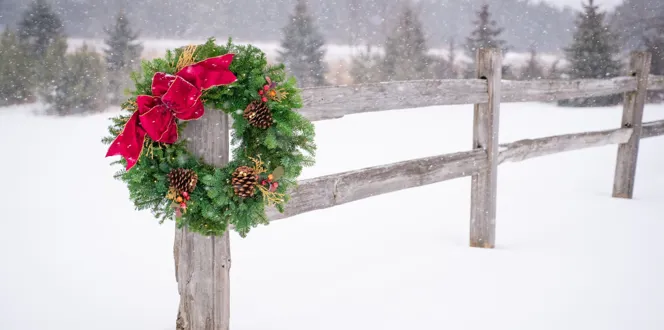Noticed yellow, pale green or brown needles on your evergreens in winter? Well, winter salt may be the issue–especially if your struggling trees are facing the road or near a sidewalk.
Winter salt prevents you from slipping in winter, but it actually hurts your plants and trees by drying them out. Luckily, helping trees affected by winter salt is easy!
When planting new trees, select salt-tolerant evergreens to minimize the problem in the future.
Salt-Tolerant Evergreens For The Northeast & Salt Belt
Remember! Always pick the right tree for the right place. That includes selecting trees in your planting zone. Then, wait until the time is right to plant evergreens, usually fall.
Salt-Tolerant Trees For Zones 2-10
Common juniper (Juniperus communis) (zone 2-8): A small but mighty evergreen that tolerates lots of wind
Eastern redcedar (Juniperus virginiana) (zone 2-9): A sun-loving evergreen that is also drought tolerant
Mugo pine (Pinus mugo) (zone 2-7): An adaptable evergreen that thrives in most soils and is drought tolerant
Southern magnolia (Magnolia grandiflora) (zone 6-10): An evergreen that wows with snow-white flowers in late spring
Longleaf pine (Pinus palustris) (zone 7-10): A Southern classic that is drought-tolerant when established
The Benefit Of Salt-Tolerant Evergreens & Trees
Winter salt can cause water stress on trees. Symptoms may look similar to drought stress, such as late leaf-out, stunted foliage, discolored/disfigured foliage, or even branch dieback. Some trees, however, can simply handle winter salt better than others.
“Strategically placed salt-tolerant trees can act as a barrier to protect less tolerant species from salt spray,” said Coe Roberts, a certified arborist and manager of digital strategy at the Arbor Day Foundation.
The Most Important States to Plant Salt-Tolerant Trees and Evergreens
As you’d guess, it’s most beneficial to plant salt-tolerant trees in areas that get the most snow. If you live in the Salt Belt, Coe recommends planting salt-tolerant species.
The Salt Belt includes Alaska, Colorado, Connecticut, Delaware, Illinois, Indiana, Iowa, Maine, Maryland, Massachusetts, Michigan, Minnesota, Missouri, New Hampshire, New Jersey, New York, Ohio, Pennsylvania, Rhode Island, South Dakota, Utah, Vermont, Virginia, West Virginia, Wisconsin, and Washington DC.





